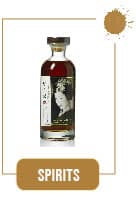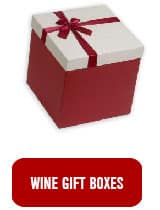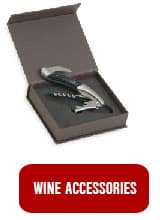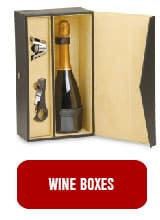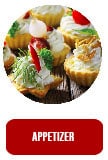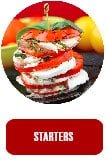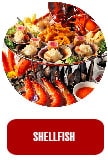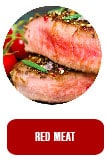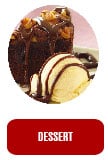No products
list of wineries
-
Domaine René Rostaing
Rene Rostaing produced their first wine 1971. But it took almost 3 decades before wine became a full time occupation for Rene Rostaing .
Currently Rene Rostaing owns 7.5 hectares of vines that is spread out among 20 different parcels located in 14 lieux-dits.
Rene Rostaing produces 4 different Cote Rotie wines: Rene Rostaing Ampodium, Rene Rostaing La Landonne, Rene Rostaing Cote Blonde, Rene Rostaing Cote Brune
Perhaps the most celebrated vines of Rene Rostaing are the 1.6 hectares of vines they own in the La Landonne vineyard.
-
Domaine Richard Leroy
Aside from his passion, there was nothing to predispose Richard Leroy to become a winegrower (no wine producers in his family and a student of Economics) but in the middle of the 1990s he took on 2.7 hectares of vines in Rablay-sur-Layon.
He used to produce sweet white wines under the Rablay-sur-Layon appellation and dry wines under the Anjou appellation but following serious disagreements with the INAO his cuvées have been reclassified under the Vin de France label.
Yields are very low and only the best grapes are selected. The viticulture is, of course, organic and harvesting is done by hand. Sulphur levels have been reduced dramatically year after year. These wines are perhaps one of the finest expressions of the Chenin grape. They have also become an open secret, sought-after by connoisseurs all over the world.
Unfortunately, production levels are negligible.
-
Domaine Robert Groffier
The origins of the domaine Robert Groffier date back to Frederic Groffier in the 19th century.
Today, year after year the Domaine Robert Groffier produces wines that rank with the greatest in Burgundy.
Not only are they elegant, rich and concentrated, but each "cru" truly reflects its respective "terroir".
-
Domaine Roblet Monnot
Pascal was handed the family domaine age 20 and 1987 was his first solo vintage. The domaine today is 9 hectares in total with of vines, 5 hectares in Volnay plus Pommard and Hautes Côtes.
4-5 kg small cases are used to collect the grapes following triage in the vines, plus a vibrating sorting table at the domaine. Some years everything is fully de-stemmed, others some whole-bunch is utilised. A gentle cuvasion of around 4-6 weeks is followed by 18 months of ageing in barrel and no fining or filtration.
The resulting wines are deep, textural and encapsulate the beauty of Pinot: perfume, richly textured yet ethereal; exemplary balance of sweet red fruit and earthy complexity. Wines that reveal more with each sip and every year in the cellar.
-
Domaine Roger Sabon
The Sabon family is an ancient and well-regarded name in Châteauneuf-du-Pape first mentioned in documents dating to 1540. However, the domaine Roger Sabon was founded in 1952.
The size of the domaine has grown slowly over the years with 18 hectares in Chateauneuf du Pape, 8 hectares in Lirac and 8 hectares in Côtes-du-Rhône.
They own a few parcels in Le Crau famous for its red clay under a deep layer of galets deposited from the alps eons ago.
Their oldest vines, topping 100 years old, are located in two plots near Courthézon, and are the source for the Secret des Sabon.
-
domaine Rolet père et fils
The family-run Rolet Estate is, at 58 hectares the second-largest wine growing estate in the Jura region, and one of the finest domaines in this region of eastern France.
The large palette of offerings in the Rolet portfolio demonstrates the richness of the land that encompasses the Arbois and Côtes du Jura appellations.
-
Domaine Rossignol-Trapet
With archives showing that the Rossignol family has run vineyards in Burgundy's famous Cote de Nuits since the 16th century, the current generation, brothers Nicolas and David Rossignol, have plenty of experience to draw on when creating their excellent Pinot Noir wines.
-
domaine Roulot
Domaine Roulot has become the master of the lieu-dit, not to mention the five premier cru parcels they farm in Meursault and Monthelie.
Perrières, directly above Charmes, is Roulot’s grand cru, a complete Meursault that perfectly balances richness with raciness, great grip and length without heaviness.
-
Domaine Saint Prefert
The birth of Domaine Saint Prefert dates back almost 100 years, to the early 1920’s, when Fernand Serre purchased an 80 hectare parcel of land.
In less than a decade, he founded Domaine Saint Prefert in 1930. Domaine Saint Prefert quickly earned a reputation for making high quality Chateauneuf du Pape.
Domaine Saint Prefert Charles Giraud Collection, the flagship of the estate, is made from some of the lowest yields in Chateauneuf du Pape at close to 15 hectoliters per hectare.
On average, only 400 cases are produced of this wine per year making this very hard to find after release.
-
domaine Saint-Damien
Domaine Saint-Damien is run by Joel and Amie Saurel whose family has been tending vineyards for four generations, dating back to 1821.
Until relatively recently they sold all of their grapes to negociants. In 1998 they brought on consulting winemaker Philippe Cambie and haven’t looked back.
-
Domaine Saint-Sébaste
The main grape variety for production is Pinot Noir, followed by Chasselas, Pinot Gris, Chardonnay, Sauvignon Blanc and Gewürztraminer.
The very best wine we tried was a special cuvée of Pinot Noir, the Clos de la Perrière Neuchâtel, which could easily rival a fine village Burgundy of the Côte de Nuits. Even a premier cru.
-
Domaine Santa Duc
Domaine Santa Duc was founded in Gigondas 1874 and has been passed down through four generations.
Yves Gras is one of the great characters of the region and is renowned for producing wines which are powerful evocations of the local terroir.
100 % in stock
All of our products are avalaible on stock
Quick delivery
Your order will be shipped in 48 hours in a packaging provided for this purpose
Free delivery
Free shipment fees for orders over 1000 CHF (in Switzerland)
Free pickup in Geneva
In order to avoid shipping fees, your order can be picked up directly in our cellars or shop in Geneva
Your fidelity rewarded
2 % off







